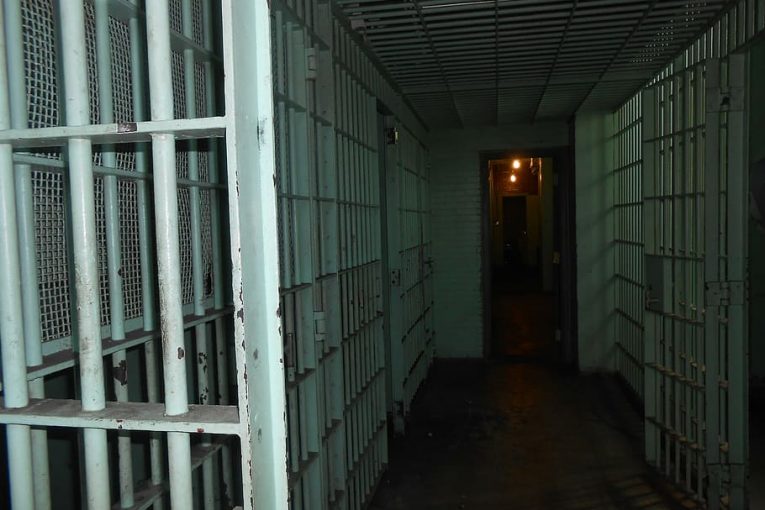

By Alphaeus Donatus Caston Bey
LOS ANGELES, CA – A report released this week by the Ella Baker Center for Human Rights and the UCLA Luskin School of Public Affairs found California state prisons fail to protect themselves and the incarcerated from looming climate hazards.
The study charged the California Department of Corrections and Rehabilitation (CDCR) has insufficient emergency and climate disaster preparedness plans in place.
According to the report, when climate change impacts our planet and our communities, past research has not taken into account the impact on people living inside prisons.
In surveying nearly 600 incarcerated people in 34 prisons, the report, “Hidden Hazards: The Impacts of Climate Change on Incarcerated People in California State Prisons,” examines the “intersections of climate change, environmental justice, and the carceral system.”
It also looks to further understand the risk associated with these hazards including, wildfires, floods, and extreme temperatures, and offer solutions as these climate hazards “accelerate.”
These solutions fall under three categories: strategies to reduce the prison population; state legislation to strengthen oversight of the procedures and operations of prisons; and approaches to address climate adaptation, according to the report.
The first-of-its-kind study argues incarcerated people are “distinctly vulnerable” to climate hazards in comparison to the general population, finding 71 percent of those surveyed believe prison staff would lock imprisoned people in their cells and prioritize their own safety during a climate hazard, noting CDCR’s preparedness, response and recovery procedures during a climate hazard are insufficient.
“Climate change isn’t arriving; it’s already happening,” writes Juan Haines, an incarcerated journalist at San Quentin State Prison, who added those warnings have sounded for years. But for the 2.3 million of us in prisons and jails, the impacts are more severe as we face overcrowded and architecturally flawed housing units that jeopardize our health and wellbeing.”
Advisor to the study and Director of the Programs at the Ella Baker Center for Human Rights, Emily Harris, notes “prisons do not keep people safe and we’ve unfortunately witnessed that during that COVID-19 pandemic and several disasters over the past decade.”
“Gov. Newsom and California officials need to take radical action to protect the community of incarcerated people that are stuck behind prison walls during a climate emergency,” asaid Harris.
The report outlines several other key findings, one being that the remote areas, aging infrastructure, and overpopulation of prisons make them “highly susceptible to climate hazards.”
“Hidden Hazards” also points to the lack of information provided to the public and the legislature. It suggests the CDCR’s Department Operations manual is outdated as it fails to mention “flooding, wildfires or extreme temperatures.”
In comparison to the preparedness of other state carceral systems, the study also suggests California’s prison system is on par with those of other states, failing to keep incarcerated people safe during climate emergencies and that California is set up to do the same.
The report proposed several solutions that California officials can take to address the “vulnerabilities” of people currently incarcerated. These steps that fall under the three proposed recommendations include: Strategies to reduce the prison population; Reduce the size of the incarcerated population by 50,000 with a focus on people 50 years or older and those who are most vulnerable; Require CDCR to create rapid release policies to use during times of emergency; Close prisons most vulnerable to climate hazards; and State Legislation to Strengthen Oversight of the Procedures and Operations of Prisons.
Other options include: Update the State of California Emergency plan to recognize the vulnerability of incarcerated people; Create minimum standards for emergency plans and require CDCR to develop a bi-annual report defining the protocol and resources on-hand to carry out these plans; Require CDCR to produce an annual report on the number of climate hazards experienced at CDCR prison facilities; Addressing climate adaptation; Reallocate funding to expand heating, air conditioning, ventilation, shade, and backup generators; and Expand emergency preparedness training for staff and incarcerated people.
Amika Mota, a formerly incarcerated firefighter and Executive Director of the Sister Warriors Freedom Coalition, said the report highlights the neglect incarcerated people have historically suffered, codified in criminal legal and climate policy. She said the report’s recommendations align with the growing movement for prison closures in California.
“California must release a substantial percentage of people in locked facilities to prevent climate change casualties,” said Alex Binsfeld, Legal Director at the Transgender, Gender-Variant, & Intersex Justice Project.
“This report offers eight clear steps that California must take as temperatures rise and unprecedented weather events loom close to the state’s prisons,” adds Wanda Bertram, Communications Strategist for the Prison Policy Initiative.
“This report makes an irrefutable case that California must take action now, including recognizing people behind bars as a vulnerable population — something that other states facing climate crises, such as Alabama and Arkansas, have already done — and prioritizing closing prisons, following the recent example of states like New York,” said Bertram.